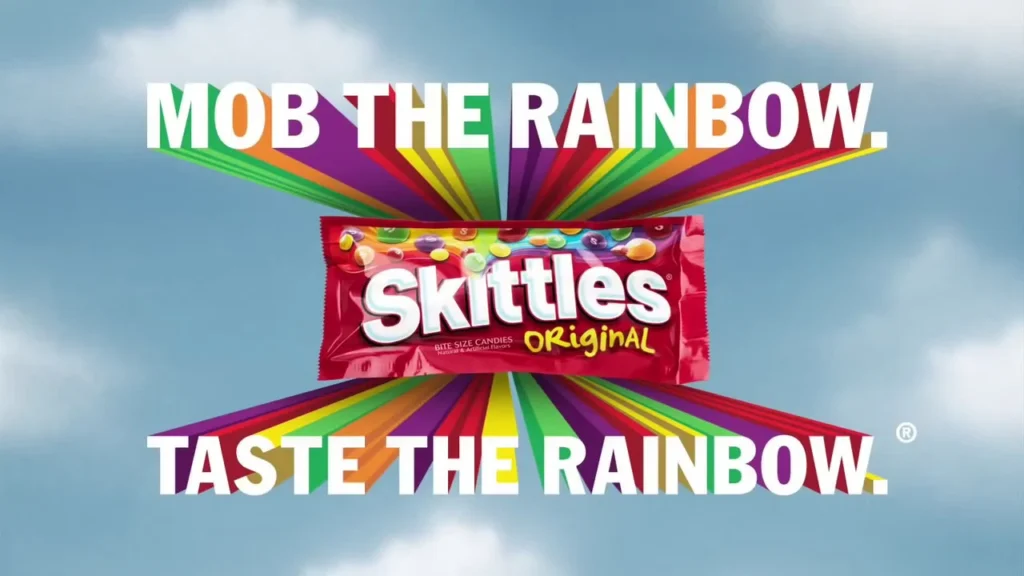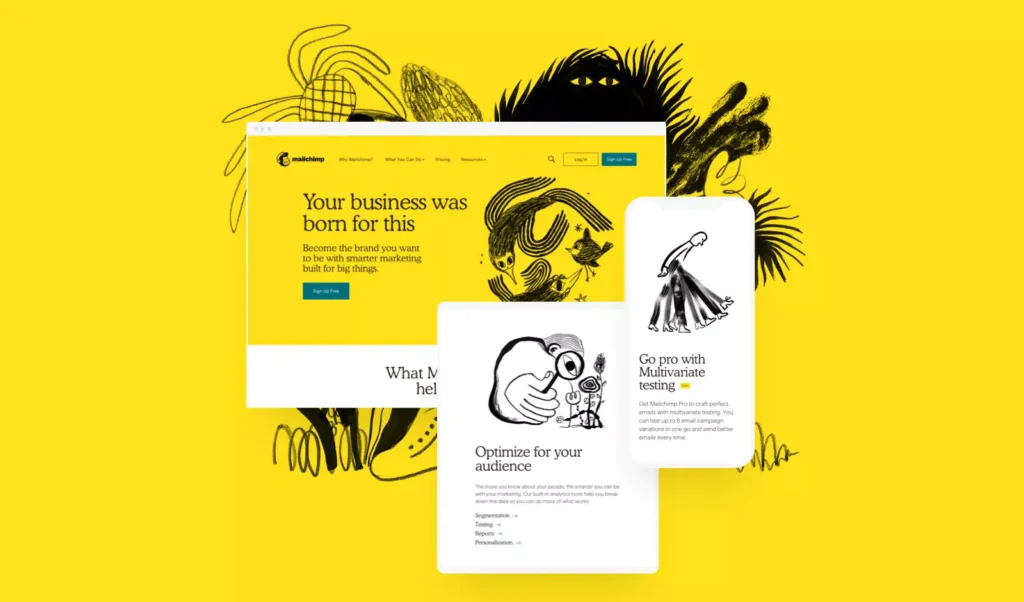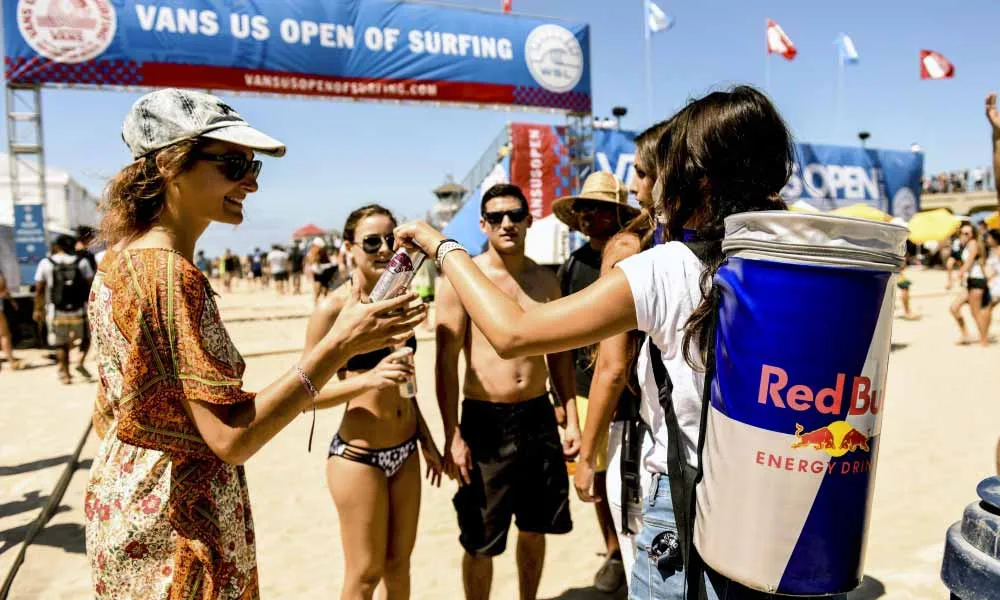The Influence of Branding in Marketing Strategy
Let’s start at the beginning – what is a brand? A brand is more than a logo. It’s not just a name. It’s neither this nor that. What, then, is it? The brand constitutes customers' whole experience and perception concerning a company, its products or services.
A brand can be called your business in somebody else’s thoughts. It’s the emotions your brand makes them feel, associations it gives rise to or gut reactions it provokes. This includes everything from visual identity and messaging through customer service touchpoints to product quality levels.
Trust, loyalty and recognition are three things bred by solid brands in consumers’ minds about them. Differentiation from competitors allows for deeper connections with audiences; this is what good marketers should always consider when creating their branding strategies as part of overall marketing success formulae.
Table of Contents
The Role of Branding in Marketing

Suppose you’re a customer standing in front of two almost identical products. One is an unfamiliar generic item, while the other belongs to a brand you recognise and trust. Which one do you think you’d be more likely to buy?
For most people, the familiar brand has a huge advantage. Branding creates awareness, credibility, and loyalty among consumers that can directly influence their buying decisions. Effective branding will help:
- Differentiate your product in a crowded market
- Increase perceived value and pricing power
- Drive customer acquisition and retention
- Boost marketing ROI across channels
- Create evangelists who spread the word about your brand
- Strengthen your competitive position
Branding shapes how current or prospective customers perceive your business. It sets their expectations and affects their willingness to make purchases from you. Marketing supports these aims by raising awareness through communications programs and reinforcing messaging with consistent creative executions across all media touchpoints. It strives for WOW experiences at every stage of contact between people representing different parts of organisations involved in delivering goods/services (employees) and those purchasing said items (consumers).
Brand Equity – The Marketer’s Gold
The real power behind successful brands comes from building up what marketers call ‘brand equity’. This is essentially where companies have created such strong positive associations around their names that they become valuable assets beyond just being associated with certain types of products or services offered under them.
When a brand has high levels of equity attached, its title carries considerable sway over decision-makers minds along with relevance dimensions such as recognition factor, top-of-mind awareness, recall ease, etc. All are leading towards increased likelihoods for purchase intents rising above those which might otherwise have existed had another less well-known alternative been present instead. Brand equity opens doors like no other does!
Critical Elements of an Effective Brand

So, what does it take to create a robust and equity-driving brand? Many things.
Brand Positioning
Brand positioning is about what you stand for and how you want to be perceived in the market. It’s your branding and marketing blueprint.
Brand positioning should be valuable, credible, and consistently reinforced to differentiate you from competitors. It articulates your unique value proposition as a business or organisation and outlines the attributes that support this claim.
Volvo positions itself around safety, while BMW focuses on performance and driving experience. Each of these brands has carved a defendable position within the automotive category.
Brand Identity
Brand identity includes all of the visual and tangible elements that represent who/what you are – logo design(s), colour palette(s), typography system(s), tagline usage guidelines (if applicable), etcetera — which help people recognise your brand across different touchpoints.
A robust, cohesive brand identity system also serves as an instant reflection of the brand’s personality wherever it appears online or offline. This is achieved through establishing visual consistency while reinforcing key attributes at every opportunity presented by both digital & physical spaces inhabited by potential customers/clients/users/stakeholders, et al.
Brand Voice & Messaging
Your communication style affects how others perceive you too; therefore, voice tone choice words expressed matter much when crafting messages meant for different audiences, even if they share the same goal/objective. Authenticity also matters most since no one wants to deal with someone whose way of talking keeps changing depending on who they meet along their journey towards success in whatever area of life.
So always use consistent language throughout all customer touchpoints — web copy, marketing materials, social media posts… everything!
Customer Experience
Nowadays, people aren’t just buying products or services; instead, they’re purchasing experiences too. Therefore, today’s branding is about creating an experience around what you sell – from first impression through purchase decision-making, product usage post-purchase stages up to customer service interactions, etcetera.
A positive brand experience helps to create loyal customers who not only repurchase but also refer others, thus driving business growth and sustainability over time, while negative ones may turn potential into lifelong critics.
How to Build an Awesome Brand

Building a great brand doesn’t take one night. It requires strategic thinking and disciplined execution across your entire organisation. Here are some key activities that you should know about:
Brand Research & Strategy
To create a brand, you must research your market, competitors, target audience, and their needs, pain points, and motivations. This information will help shape your brand strategy, including positioning, messaging, visual identity and customer experience guidelines.
Visual Identity Creation
Once you have developed your brand strategy, an imaginative team will generate ideas for logos, colour palettes, fonts or typography options and image styles, all part of the visual identity system meant to ensure consistency on every branded material or channel.
Website & Marketing Material Development
Having set the rules through brand guidelines, I will apply this new identity with its corresponding messages throughout the website design process, from sales collateral creation to various marketing campaigns such as advertising presentations, email marketing, etcetera.
Internal Training & Culture-Building
Branding goes beyond marketing. You need to work towards embedding it in every staff member. Train them on why they value voice experience standards, related processes, incentives, etc., which will help drive living through all touchpoints with customers.
Content Marketing & Social Activations
Make sure that any content produced reflects who you are while also providing helpful knowledge and entertainment value. Create shareable stories, thoughts, and leadership pieces around social media platforms. Always engage people in conversations because these actions bring out desired personality traits associated with the brands discussed here.
Event Branding & Sponsorships
Events should be designed to become immersive enough for attendees to feel part of what is happening. Ensure branding occurs during sponsorship deals made by different companies on a partnership basis where both parties can benefit equally from each other's strengths.
Influencer & Partner Co-Branding
This involves using individuals or organisations with a large following relevant industry niche to gain more exposure and credibility, given shared interests and complementary values. Jointly running campaigns under these circumstances allows for bringing together various equities to reach wider audiences, thus achieving desired objectives faster than possible alone.
Brand Monitoring & Refinement
Track constantly how people feel about what you stand for as an organisation. Measure different indicators like levels of recognition, perception preference engagement, etc. Use feedback collected from those interacting with the brand regularly to make necessary adjustments to keep it alive and vibrant in their minds forever.
Branding Tips from the Trenches
Now that you understand the power and critical components of branding, here are some pro tips for doing it well:
- Make your brand authentic and human, not just a faceless corporate entity. Highlight your purpose, values and unique personality.
- Be clear and consistent in communicating your brand – the visuals, voice, messaging, and overall experience should feel cohesive.
- Design a brand that stands out and disrupts conventions in your industry. Distinctiveness makes you more memorable.
- Give your brand flexibility to evolve while maintaining essence. Brands need updates to stay culturally relevant.
- Craft an emotional brand narrative that forms genuine connections with customers. Stories captivate hearts and minds.
- Leverage humour, pop culture or provocative hook to get attention, but don't sacrifice brand credibility.
- Align your internal culture and employee experience with your external brand identity. Inconsistencies show through and damage trust.
Brand Examples to Inspire You

Let's look at a few brand examples that excel at developing differentiated identities, emotionally compelling brand narratives, and premium consumer perceptions.
Apple
Apple's “Think Different” formed the backbone of one of the most iconic global brand transformations. By redefining itself as the anti-establishment, innovative alternative to Microsoft, Apple cultivated a fiercely loyal tribe of lifelong brand advocates.
Apple makes technology feel personal and magical Through crisp product design, a simplified user experience, an expertly humanised brand personality (“friendly disruptor”), and countless product launch events. This singular branding vision revived Apple's equity after the 90s lull and propelled it to become one of the most valuable brands worldwide.
Red Bull
Take a product as essential as a carbonated energy drink and turn it into a culturally transcendent brand icon – that's the Red Bull success story.
Red Bull doesn't just sell a beverage; it sells an adrenaline-fueled lifestyle brand centred around action sports, risk-taking and living life to the fullest. Everything from their slogans (“Red Bull gives you wings”) and aggressive event sponsorships to animations of the cute mascot charging through scenes exudes unbridled energy and adventurousness.
Glossier
The direct-to-consumer beauty brand Glossier has risen to cult status by speaking authentically to modern consumer values around inclusivity, understatement and individual self-expression.
Defying traditional makeup brands' promotional blitz, Glossier built a devoted following by fostering a community empowering real people to embrace their unique, natural beauty.
Glossier's minimalist, millennial-pink branding seems tailor-made for the Instagram age, focusing on user-generated content, personal stories and peer recommendations over celebrity endorsements or loud advertising. The brand voice is warm and relatable, speaking to customers like a trusted friend.
By shunning stereotypical beauty ideals, Glossier's branding makes customers feel seen and heard and is part of the “No Makeup” makeup movement the brand pioneered. Insisting makeup should be fun and non-judgmental, not a mandatory chore, and its products and messaging should resonate powerfully with younger audiences.
Outdoor Voices
The athletics apparel brand Outdoor Voices creatively re-imagined athletic clothing through a sophisticated, technical approach and a “recreational” brand ethos promoting activity integration into daily living.
Instead of extreme hardcore messaging around “crushing it” or outworking the competition, OV playfully encourages just getting out and raising your heart rate through enriching recreational activities like hiking, yoga or dog walks.
With clean visuals blending fashion and function, the aspirational brand promotes self-betterment through mindful movement without taking itself too seriously. This unconventional “technical free time” brand positioning has helped OV stand apart from more enormous sports marketing juggernauts.
The Future of Branding

Branding has become increasingly important with the continuous shift in the marketing landscape. Below are some of the trends that will shape the brands in future.
Internet democratisation for brands
The Internet has empowered even smaller brands or individuals to gather large followings and equity through skilled content creation and social media strategy. Unknown brands can be made famous overnight by viral trends, memes or micro-influencers.
Expansion of D2C & Disruptor Brands
Traditional distribution and marketing rules do not bind direct-to-consumer (D2C) brands that have erupted due to this internet disruption. These digitally native upstarts use lean-agile approaches for branding, which challenges established industry leaders.
Corporate Purpose & Social Responsibility
It is imperative for brands now more than ever before to show ethical practices and societal impact authenticity. Sustainability, transparency, social justice, and giving back are among the values consumers want their brands centred on. Brand activism is increasing rapidly.
Interactive & Immersive Brand Experiences
Experiential technology keeps advancing alongside mobile technology, meaning that to make their brand stories multi-sensory, companies shall endeavour to craft immersive experiences that are increasingly interactive. The audiences might get dazzled by pop-ups, AR/VR activations or any other memorable moments related to branding.
Smarter Data-Driven Brand Personalisation
By using AI, IoT, plus analytics capabilities, predictive relationships that respond to individual consumer preferences and context better can be built between different brands and customers. Optimised branding happens in real-time and at scale; hence, it is possible through devices like artificial intelligence (AI) and the Internet of Things (IoT), among others, according to data collected from various sources like web browsers, history, etcetera.
Influencer & Media Brand Clout
Influencers’ power cannot be disputed anymore, considering how celebrities, media companies or even specific individuals who create content become personal brands. This will speed up co-branding with content partnerships between consumers and influential digital brands/personalities.
However, regardless of where branding may go next, creating authentic brand meaning, differentiation, and deep human connections will continue to be the top concern for intelligent marketers.
Branding FAQs
Finally, let's cover some frequently asked questions about branding:
What's the difference between a brand and branding?
A brand is the overall perception someone holds in their mind about a company, product or service. Branding refers to the activities and assets used to shape, reinforce and evolve that brand over time through strategic marketing efforts.
Why is branding so important for businesses?
Strong brands drive differentiation, recognition, loyalty and customer acquisition. Effective branding leads to higher perceived product value, premium pricing power, resilience against competitors, and long-term valuation growth.
How much should companies budget for branding?
There's no set budget percentage, but most experts recommend between 5-15% of gross revenue go toward branding/marketing efforts depending on factors like your industry and growth goals. For new companies or rebrandings, initial branding investments may be higher.
How long does it take to build a brand?
For significant brands, establishing brand awareness and equity is a long game requiring consistent effort over years, if not decades. Plan for 12-18 months to solidify your new brand foundation through launch campaigns and sustained multi-channel reinforcement. Expect ongoing brand refreshing, too.
What makes a brand successful?
Successful brands excel at several things: clearly defining a differentiated brand positioning, crafting an authentic and memorable brand identity/personality, delivering on their brand promise through great products/services and customer experiences, staying relevant by evolving with audience needs, and building emotional connections that inspire fierce customer loyalty.
How can companies protect their brand?
Establish brand standards and guidelines around using your name, logo, visuals, tone, etc. Legally trademark your intellectual property. Monitor brand mentions and immediately address any misuse or damaging content. Focus on reinforcing positive brand associations through quality products/services and cohesive marketing.
What metrics measure branding effectiveness?
Common branding metrics include brand awareness levels, favorability ratings, share of voice, search share, website traffic, engagement rates, Net Promoter Scores, sentiment analysis, lifetime customer value, and incremental sales lift from branding campaigns. Ultimately, brand equity contributes to overall business valuations.
What branding mistakes should companies avoid?
Make sure your branding feels consistent by using mixed messaging, visuals and experiences across channels. Neglecting a trademark can lead to intellectual property disputes. Failing to evolve your brand leaves you stagnant. Empty marketing fluff without substantive product/service delivery damages credibility, too.
How does B2B branding differ from B2C?
While core branding principles apply, B2B companies must focus more on rational selling factors like credibility, expertise, ROI metrics and relationship-building versus consumer brands' emotional, aspirational appeal. Brand consistency remains critical across all corporate/product content and customer touchpoints.
How can small businesses approach branding?
With limited budgets, small brands should start by deeply understanding their target persona and owning a distinctive brand positioning versus more prominent players. Leverage channels customers already use. Find creative ways to deliver a premium branded experience that exceeds expectations. Focus branding efforts in just 1-2 channels initially. Revenue reinvestment helps build branding capabilities over time.
What role does brand purpose play?
Clearly defining your brand's broader purpose – the positive impact you aim to have on your customers, communities and the world – has become crucial for building deeper emotional resonance with audiences and significantly younger demographics. A meaningful brand purpose guides decision-making beyond just profit motives.
Bringing It All Together
Whether you are a freelancer, a small business or a multinational corporation, strategic branding should sit at the heart of your marketing campaign. The lasting worth, uniqueness, and relationships established with customers through branding make you more than just another commodity on the market.
Brands that are most recognised and highly valued invest much in building their brands over time using words and symbols that evoke emotions. They know that this turns products into objects of desire for people and businesses into identifiables where individuals want to belong.
Even though trends such as digital disruption or ethical branding will continue to shape the brand's future, nothing will ever change about writing authentic stories about brands which capture both hearts and minds alike – this is still the most significant challenge any marketer could ever face. It’s all about creating love-inspiring customer experiences through deep-rooted brand loyalty programs that keep companies going forever.
